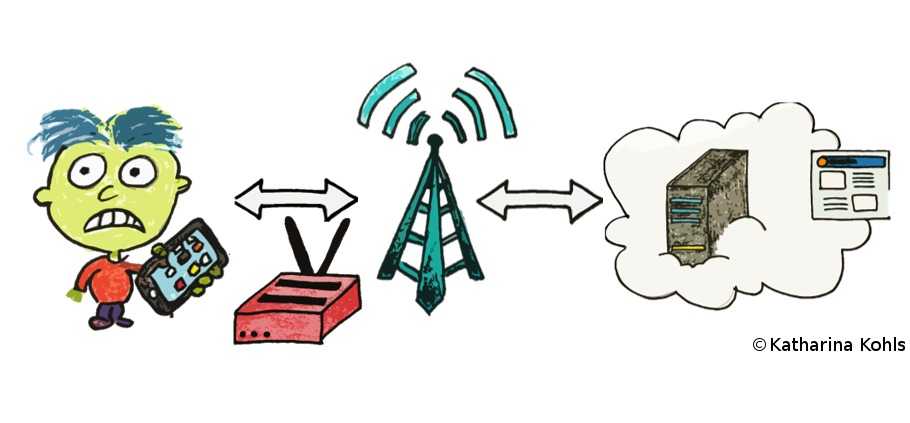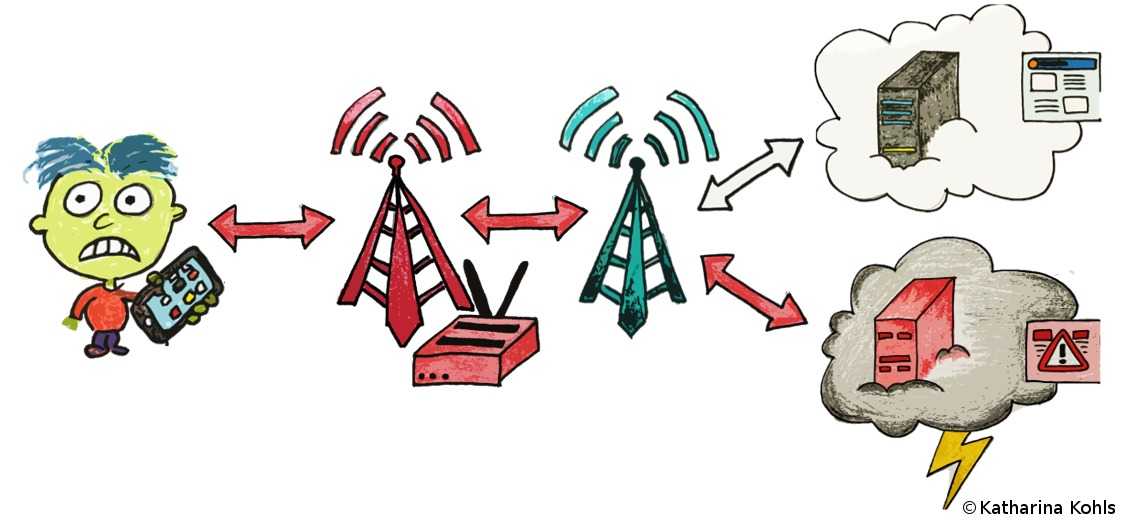Breaking LTE on Layer Two
David Rupprecht, Katharina Kohls, Thorsten Holz, and Christina Pöpper
Ruhr-Universität Bochum & New York University Abu Dhabi
Ruhr-Universität Bochum & New York University Abu Dhabi
Our security analysis of the mobile communication standard LTE ( Long-Term Evolution, also know as 4G) on the data link layer (so called layer two) has uncovered three novel attack vectors that enable different attacks against the protocol. On the one hand, we introduce two passive attacks that demonstrate an identity mapping attack and a method to perform website fingerprinting. On the other hand, we present an active cryptographic attack called aLTEr attack that allows an attacker to redirect network connections by performing DNS spoofing due to a specification flaw in the LTE standard. In the following, we provide an overview of the website fingerprinting and aLTE attack, and explain how we conducted them in our lab setup. Our work will appear at the 2019 IEEE Symposium on Security & Privacy and all details are available in a pre-print version of the paper.



LTE is a complex collection of protocol specifications that define how the network functions. In general, there are two types of traffic: control traffic and user traffic. Control traffic organizes how the user traffic is sent and received, whereas the user traffic is the actual payload, e.g., the content of the visited website. In our analysis, we focus entirely on the second layer (layer two) of the LTE specification. This data link layer lies on top of the physical channel, which maintains the wireless transmission of information between the users and the network. Layer two organizes how multiple users can access the resources of the network, helps to correct transmission errors, and protects data through encryption.
To provide a secure transmission, LTE uses several security mechanisms. When Bob's phone connects to the network, it establishes mutual authentication and derives a shared key. Mutual authentication means that the network and the phone can verify the identity of the partner, respectively. In the following communication, the derived key is used to encrypt the control and user traffic. Furthermore, the control traffic is integrity protected, which means that the attacker is not able to manipulate the traffic during the transmission. Despite these security mechanisms, we found passive and active attacks that allow to observe which websites Bob accessed and even to redirect him to a fake website.


In a passive attack, the adversary does not interfere with the network, but only eavesdrops on a connection. The eavesdropper Eve accomplishes this by deploying a sniffing device close to Bob. As a result, she has access to all information that Bob sends to the network and receives in response, e.g., the website he wants to access. The data Link Layer protects transmissions through encryption. Nevertheless, an attacker can still obtain meta-information about the communication process (e.g., when and how often data is transmitted).
Meta-information on the data link layer leak information about the consumption of data per time unit. For example, if Bob watches a video, he uses more traffic compared to when he accesses a simple website. As a preparation step of the attack, Eve records popular websites and their layer two patterns. During the attack, she eavesdrops the meta-information and looks for similar patterns. In case she finds a match, she knows which website the victim visited -- with a certain probability.


We conducted a website fingerprinting attack in our lab setup of an LTE network and tested different devices on a selection of the 50 most popular websites on the Internet. We use this experimental evaluation to demonstrate the general feasibility of website fingerprinting on encryption data link layer traffic in LTE. Our results indicate that such attacks, in fact, are possible: we achieve an average success rate of about 89% ± 10. In future experiments, we plan to conduct the same experiments within a commercial network, which complicates the attack due to background noise and uncontrolled network dynamics.
In an active attack, the adversary sends signals to the network or to the device by using a specific device that is capable of simulating the legitimate network or user device. In our case, the adversary does both and intercepts all transmissions between Bob and the network. Thus, Bob perceives the adversary as his usual network provider and connects to the simulation device. Towards the real network, the adversary acts like she was Bob.


LTE uses mutual authentication on the layers above the data link layer to prevent Bob's phone from connecting
to
a fake network. However, the layers below are unprotected and an attacker can forward high-layer messages. Bob's
phone still assumes that he is connected to the original network. For the user data redirection attack, we
exploit
that the user data is not integrity protected. Thus an attacker can modify the content of a packet if she knows
the original plain text, even the packet is encrypted. In the case of DNS packets, we know the destination
address
of the original DNS server. For the redirection, the attacker adds a specific offset, thus the DNS request is
redirected to a DNS server under the adversary's control.
More technical speaking: User data is encrypted in counter mode (AES-CTR), where the encryption algorithm is
used as a keystream
generator, and the ciphertext is computed by XORing the keystream with the plaintext. In fact, this helps us to
perform our attack given that the cipher is malleable.
The malicious DNS server performs DNS spoofing, meaning that the domain is resolved to a fake, malicious IP address. As a result, the phone sends a requests the wrong IP address. If the application layer protocol does not detect this malicious redirection, Bob gets redirected to a malicious website. DNS spoofing is a common attack on the Internet and can be performed when the attacker is for example under the control of one hop to the original DNS server. Comparing the user data redirection attack, the attacker only needs to be in the proximity to the victim to perform such an attack.

To demonstrate the practical feasibility of the aLTEr attack, we have implemented a full end-to-end version of the attack within a commercial network and commercial phone within our lab environment. We have implemented the LTE relay based on the open source LTE Software Stack srsLTE by Software Radio System. We used a shielding box to stabilize the radio layer and prevent unintended inference with the real network. In addition, we set up two servers to simulate how an attacker can redirect network connections: our own DNS server that answers specific DNS queries with a malicious IP address and an HTTP server that replicates a login site to act as a phishing website. The following videos demonstrates the different steps of an aLTEr attack.
@inproceedings{rupprecht-19-layer-two,
author = {Rupprecht, David and Kohls, Katharina and Holz, Thorsten and P\"{o}pper, Christina},
title = {Breaking {LTE} on Layer Two},
booktitle = {IEEE Symposium on Security \& Privacy (SP)},
year = {2019},
month = may,
publisher = {IEEE}
}